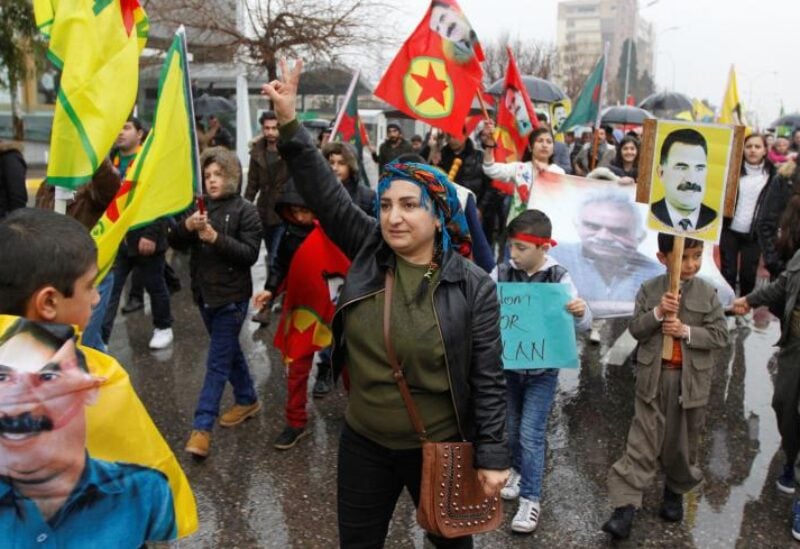
Kurdistan Workers’ Party (PKK).
Over the past few days, there has been yet another indicator of how dissatisfied the people of Iraqi Kurdistan are with their leaders was demonstrated by thousands of protesters, many of them students, took to the streets in the semi-autonomous northern Iraqi region to demand the restoration of financial stipends local authorities stopped paying around 2014. During the protests, security forces used a water cannon, fired tear gas and then live bullets to disperse increasingly angry crowds.
This is not the only such indicator. Other recent headlines involve this week’s drowning of 27 people in the English Channel, most of whom, British media have reported, appear to have been Kurds from Iraq. Additionally, many of the would-be asylum-seekers trapped on the border between Belarus and Poland are also Iraqi Kurds.
This has led outsiders to ask why so many Iraqi Kurdish people are so desperate to leave home that they would risk such a hazardous journey.
After all, at one stage, Iraqi Kurdistan — which operates independently from the central Iraqi government in many ways and is home to the country’s Kurdish minority — was being described as “the new Dubai.” It seemed prosperous, peaceful and business-friendly, especially in comparison to the rest of the country.
“But behind this propaganda, Kurdish society was falling apart,” Komal Chomani, a Kurdish student based in Germany, wrote for the Newlines think tank earlier this week. “Society was divided into two socioeconomic classes: one of the political elite, its patrons and their brokers, and the other consisting of the masses.”
Things began to change in earnest around 2014, a time of greater insecurity thanks to the rise of the extremist group known as the “Islamic State” as well as further political conflict with the federal government and a financial crisis. Almost two-thirds of Kurdish households were (and are) on the public payroll, and the government said it had run out of money to pay some sectors, including teaching and medical professionals.
The state of democracy in the semi-autonomous region has been laid bare over several elections, as it became evident to voters that the two parties that hold the most power in the region — the Patriotic Union of Kurdistan, or PUK, and the Kurdistan Democratic Party, the KDP — didn’t plan to give anything up.
The dream of a Kurdish homeland, a unifying idea that previously took precedence over other divisions, has also dimmed.
All of this has resulted in a youthful population that has lost hope of ever achieving political change or personal economic security. Around a quarter of the Iraqi Kurdish population, which is thought to be over 5 million, is aged between 18 and 34, and by 2018, the United Nations mission in Iraq reported, more than a fifth didn’t think they would ever get a job.
Now, some have expressed concerns that some of those frustrated young people may be turning elsewhere — to fundamentalist religion.
The majority of Kurdish Muslims are Sunni, and ultra-conservative Sunni clerics, known as Salafists, have been active in the region since the 1950s; “salaf” means ancestors, and Salafists advocate adherence to what they see as the original rules of Islam.
Often, the Salafist clerics studied in Saudi Arabia or other Gulf countries where a similar conservativism presides. When they returned to Iraqi Kurdistan, Salafist schools and mosques received funding from those nations. Kurdish Salafists often have a major presence on social media, and some also have their own religious satellite TV channels.
In the past, Salafist groups were behind terrorist attacks or supplied recruits to extremist organizations.
But more recently, “militant jihadi Salafism lacks collective support in Kurdistan,” a 2019 report by the Sectarianism, Proxies and De-Sectarianization Project at Lancaster University in the UK, concluded. “However, there are a growing number of non-militant forms of Salafism in Kurdistan,” it noted, adding that “Salafism is on the rise in [Iraqi Kurdistan] in multiple forms.”
Experts say this is partially because ruling political parties, the KDP and the PUK, have been more tolerant of Kurdish Salafist clerics, the majority of whom do not espouse violence. Instead, they emphasize obedience to political leadership — that’s in contrast to local Islamic political parties, who form part of the opposition in the Iraqi Kurdish parliament and who have often challenged the current leadership.
“The authorities in the region support Salafism in order to weaken the Islamic parties,” confirmed Ibrahim Sadiq Malazada, a lecturer in sociology at Soran University in Iraqi Kurdistan, who has researched levels of religiosity among local youth. “But this is a mistake,” he told DW, adding that he believes that religious conservatism has “ruined the tolerant and open Kurdish culture” and that conservative clerics are using the region’s various crises and local youths for their own ends.
Muslih Irwani, a sociologist and head of the Public Policy Institute, a think tank in Irbil, said he saw it as “a new wave of return to Islam” among the younger generation. There were two forms of this. One was more traditional and politically neutral, Irwani explained. “The second approach is more radical … and is popular among those who are devastated by the political situation in Iraqi Kurdistan,” he said.
But not everybody in the region agrees that dissatisfied Kurdish youth are in danger of religious radicalization — at least, not right now.
“Young Kurdish people are angry at the current government, and they’re angry at anyone that defends that government,” Soran Ahmad, a local journalist covering the student protests in Sulaymaniyah this week, told DW. “The Salafists defend the government; they say the ruler must be obeyed and the status quo protected, for the sake of stability and security.”